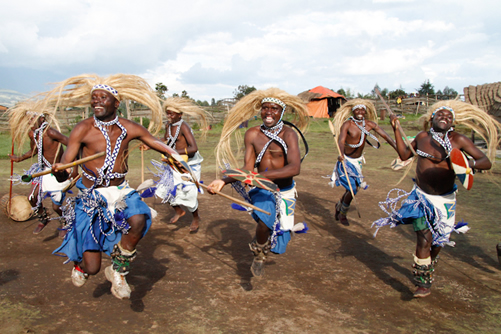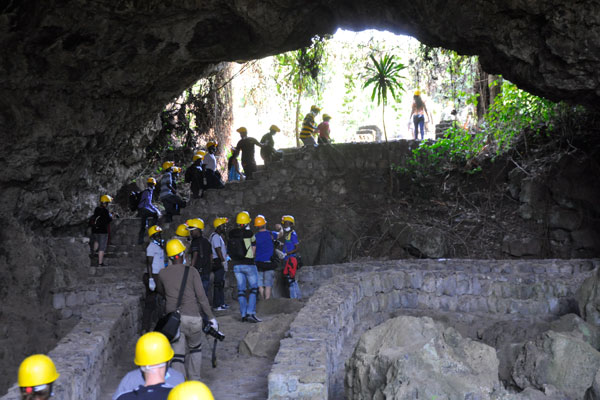
What To Expect on a Rwanda Wildlife Safari to Volcanoes National Park
What To Expect on a Rwanda Wildlife Safari to Volcanoes National Park: There is little question that a gorilla trekking safari in Volcanoes National Park is a life-changing event. Millions of people come to gorilla locations every day to have face-to-face contact with the peaceful and majestic mountain gorillas in their natural environment, proving the authenticity of a gorilla trek in Africa. Expect a variety of things along the way, during, and after the unmatched exhilarating trip in the rainforests if you decide to go on a gorilla safari in Rwanda‘s Volcanoes National Park.
A gorilla safari in Africa can only be done in three countries: Uganda, Rwanda, and the Democratic Republic of the Congo, which means that a visitor who wants to view gorillas must visit one of the three. Many occurrences occur on a safari, for which you should be prepared. To guarantee a seamless flow of your gorilla safari experience, we provide a summary of what to expect from the beginning to the finish of the trekking session.
On the day of the walk, you will have an early breakfast and be transferred from the hotel/lodge to the local national park headquarters for a briefing as early as 7:00 am. You will be taught the dos and don’ts of interacting with endangered species.
Still there, you will be divided into groups of eight individuals and assigned to a certain gorilla family. The competent government organizations in gorilla locations allow a maximum of eight persons to engage with each gorilla family.
These organizations are the Uganda Wildlife Authority (UWA), the Rwanda Development Board (RDB), and the Institute of Congolais pour la Conservation de la Nature (ICCN) in Uganda, Rwanda, and the Democratic Republic of the Congo (DRC), respectively.
What to pack on your Rwanda Wildlife Safari to Volcanoes National Park?
For clarity, you must bring a valid gorilla permit as well as other travel papers like as passports. The permission is accompanied by a receipt that includes the trekker’s name and the sector of the national park (Buhoma, Rushaga, Ruhija, or Buhoma in the case of Bwindi Impenetrable Forest National Park).
No one is permitted to hike gorillas without permission, which is good for one hour. Your safari guide from Explore Rwanda Tours will have all of your documentation and permits, and will assist you in carrying out all of the essential procedures for gorilla trekking; you will just need to sign when necessary.
For interested tourists on safari in Rwanda, gorilla families are classified into two categories: those used for study and tourism, and those used solely by scientists and researchers, which include the Susa gorilla family, Umubano gorilla family, Sabyinyo Gorilla Family, Amahoro gorilla family, Karisimbi gorilla family, Hirwa gorilla family, Kwitonda gorilla family and Bwenge gorilla family among others.
What to expect on a Rwanda Wildlife Safari to Volcanoes National Park is a good question to ask yourself since Rwanda has more than 15 gorilla families, but only ten have been designated for tourism, with only eight tourists allocated to monitor one family each day. Susa gorilla group, Amahoro gorilla group, Umubano gorilla group, Karisimbi group, Sabyinyo gorilla group, Kwitonda gorilla group, Hirwa gorilla group, and Bwenge gorilla group are all members of the group.
What to do on a Rwanda Wildlife Safari to Volcanoes National Park?
Gorilla Trekking
In the Volcanoes National Park alone, there are 12 habituated gorilla families. Gorilla trekking is a must-do experience on a Rwanda safari. Just three nations in the world have a declining and endangered gorilla population: the Democratic Republic of the Congo, Uganda, and Rwanda. The Volcanoes National Park is home to Rwanda’s entire gorilla population. Amahoro, Umubano, Karisimbi, Sabinyo, Susa, and Hirwa are among the families to visit, What To Expect on a Rwanda Wildlife Safari to Volcanoes National Park
The walk begins with a briefing at the park’s headquarters, followed by a climb up the mountain’s bamboo landscape. There are guides for each group of trekkers to bring you to the gorilla families’ habitats, and the maximum number of trekkers per group is eight individuals. After you’ve spotted a family of gorillas, you get an hour with them to capture photographs and observe these magnificent creatures.
Golden Monkey Trekking
Golden monkeys are an endangered primate species and a must-see on a safari in Volcanoes National Park. They have been trained to improve the visitor experience. The bamboo forest near the slopes of the Virunga Volcanoes is home to the majority of golden monkeys. The golden monkey trekking experience includes a guide who will help you navigate the trail, explain Park history, and facts about monkeys, and bring you to the golden monkey hotspots. Unlike gorilla trekking, finding golden monkeys takes substantially less time.
Volcanoes Hiking
If you enjoy hiking and find yourself in Volcanoes National Park, you have two hiking options: the Day Walk and the Overnight Trek. The Day Walk takes you to Mount Bisoke, one of the Virunga Mountains’ volcanoes. It is 3700 meters high and has a crater lake at the summit.
The overnight hike follows Mount Karisimbi, the Virunga Mountains’ second-highest volcanic peak. This route passes through a variety of plant zones, including bamboo, Afro-Montane, and savannah. This climb is also renowned as one of the most difficult hikes in with a snow-capped summit, particularly during the dry months of June, July, and August.
Explore Musanze Caves
These ancient caves were formerly utilized to store food supplies for Rwanda’s rulers during times of conflict. These are now quite a sight to witness while visiting Volcanoes National Park. The cave ceilings are covered in bats, whose eyes gleam when you shine a spotlight on them. All you will have heard in the midst of the cave’s quiet as you approach the cave’s end and into the sunshine are your footsteps and the thick dew drops hitting the cave’s floor. A visit to these caverns is a trip down memory lane.

Visit Ibyiwacu Village
Ibyi’wacu Village, now known as Gorilla Guardians Village, is adjacent to the park, making it an ideal farewell stop as you depart Volcanoes National Park. The activities available here may be done whether you stay for a few hours or overnight. Do you want to try something new? Consider making or consuming traditional meals and drinks like banana juice or brewing banana beer. Try the local herbal remedy harvested and brewed fresh from the garden for the botanist or medical workers. When your curiosity has been satisfied, relax to the traditional music, dancing, and folklore performed by the locals and dance groups.
When is the best time to go on a Rwanda Wildlife Safari to Volcanoes National Park?
The greatest time to visit Rwanda is between June and September when the dry season is at its peak for wildlife watching. Wildlife Safaris in Rwanda include primate treks in the forest. Rainforests have a naturally damp environment, and it is impossible to prevent rain altogether.
How to get to Volcanoes National Park.
If you have booked your gorilla safari in Volcanoes national park with a tour operator, you will be booked into a private car that will drive you from Kigali to the park. The journey from Kigali to Volcanoes national park in Musanze is so fascinating, it passes through undulating hills and beautiful landscapes that give tourists magnificent and stunning views of the countryside.
The journey from Kigali to Volcanoes National Park takes around 2 hours and maybe 30 minutes, depending on the stopovers. We have highly customized private cars of many types at Explore Rwanda Tours, including extended 4*4-wheel safari vehicles, Jeeps, Land cruisers, and Rav 4 vehicles.


